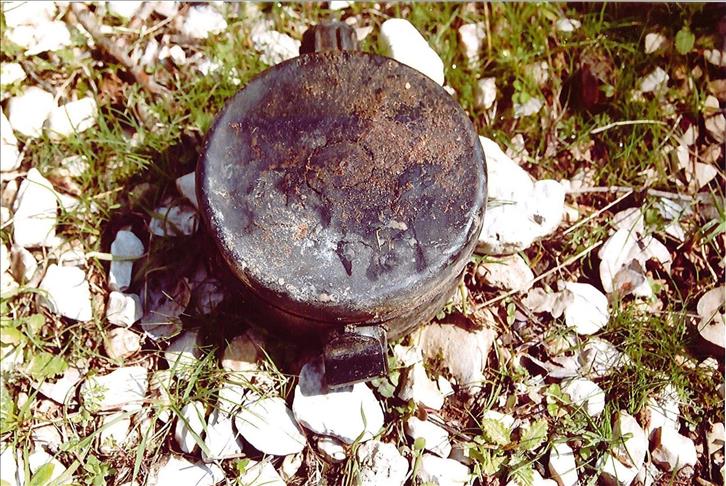
By Talha Ozturk & Vesna Besin
SARAJEVO, Bosnia and Herzegovina
At age 10, Sejd Siko should have been stepping onto a playground to ride swings with children of his age and share carefree laughs.
But instead, on Jan. 4, 2014, Siko literally walked into a minefield in northeastern Bosnia near Gracanica municipality, where he had tagged along with his father in search of scraps of metal to support his family.
The father and son duo did find metal in the end. But it came at the cost of young Siko’s life, who stepped onto a landmine and became a mutilated reality. He is now just another statistic among the 1,732 reported tragedies, 240 of which belong to children, that continue to unfold in Bosnia.
The father of the child, Selmir Siko, remembers vividly every detail of his son’s death.
"I heard an explosion….and then I held my son in my arms. He raised his shirt and pressed his hand on his wound where he bled heavily…at that moment I did not even realize that I myself was hurt," Siko told The Anadolu Agency Saturday.
In fact, he was seriously wounded in the incident. But while physical wounds can heal through surgery, how can one heal the emotional pain of the loss of one’s child? Selmir Siko said that the field where the explosion took place was unmarked as a mine-infested area. "The field was not marked, if it had been marked, we would not walk in there," he lamented.
As the world marks the U.N. International Day of Mine Awareness Saturday, Bosnia and Herzegovina is coming to grips with the fact that an estimated 1,176 square kilometers of its territory remains infested with around 120,000 mines and unexploded ordnance.
Svetlana Luledzija, a spokeswoman for the Bosnia and Herzegovina Mine Action Centre, or the BHMAC, told AA that this is actually a big cut from the original number of mines that were left behind at the end of the Bosnian War in 1996, when around 4,200 square kilometers of the country was marked as potential landmine sites. She said that while there was cause to celebrate the fact that so far 3,000 square kilometers of the country had been successfully cleared, there was much more work to be done.
An estimated 1,417 communities, where about 540,000 people live remain affected. Moreover, many residents of rural areas of Bosnia such as the Siko family enter such minefields only out of desperation. They collect scrap metals and other recyclables in the hopes to sell it and buy their basic needs.
"The priorities of mine-cleared areas are linked to sustainable return, building infrastructure, to rebuild tourism... However, we still have problems in rural areas where people depend on the forest areas and agricultural land where there have been many accidents," Luledzija said.
Most critical parts of the country are Maglaj, Doboj, Orasje, Velika Kladusa, Lopare, Bosanski Samac and Brcko District.
Also, it’s not only the mines from the Bosnian War that were a major concern, but, as she pointed out, there were still many unexploded ordinances from the World War II era that still popped up in various parts of the country.
BHMAC is the technical body of the official Bosnia and Herzegovina Demining Commission that comes under the Ministry of Civil Affairs.
Lack of funds
Luledzija told AA that while demining officials were confident they had the situation under control, the fact was demining efforts in the country had suffered a lot because of lack of sufficient funds over the years.
In fact, she said, there had been a lack of sufficient funds for the past six years.
Approximately, a year goes to waste in getting the necessary 40-million-euro allocation, which is then used to demine a 35 to 40 square kilometer wide area; with this speed, it would still take until 2019 to completely demine the area, theoretically.
"The fact is that our country must take more responsibility for this process because we cannot always simply rely on foreign funding. Our government must take more responsibility for solving this issue in the future," she said.
Moreover, mine clearance is a painstakingly slow process and because of weather conditions, sometimes work on a patch of land could last to up to four to five months, or even a year.
"The punch line is that the majority of the mine fields need to be cleared, sooner rather than later," she said.
Anadolu Agency website contains only a portion of the news stories offered to subscribers in the AA News Broadcasting System (HAS), and in summarized form. Please contact us for subscription options.



